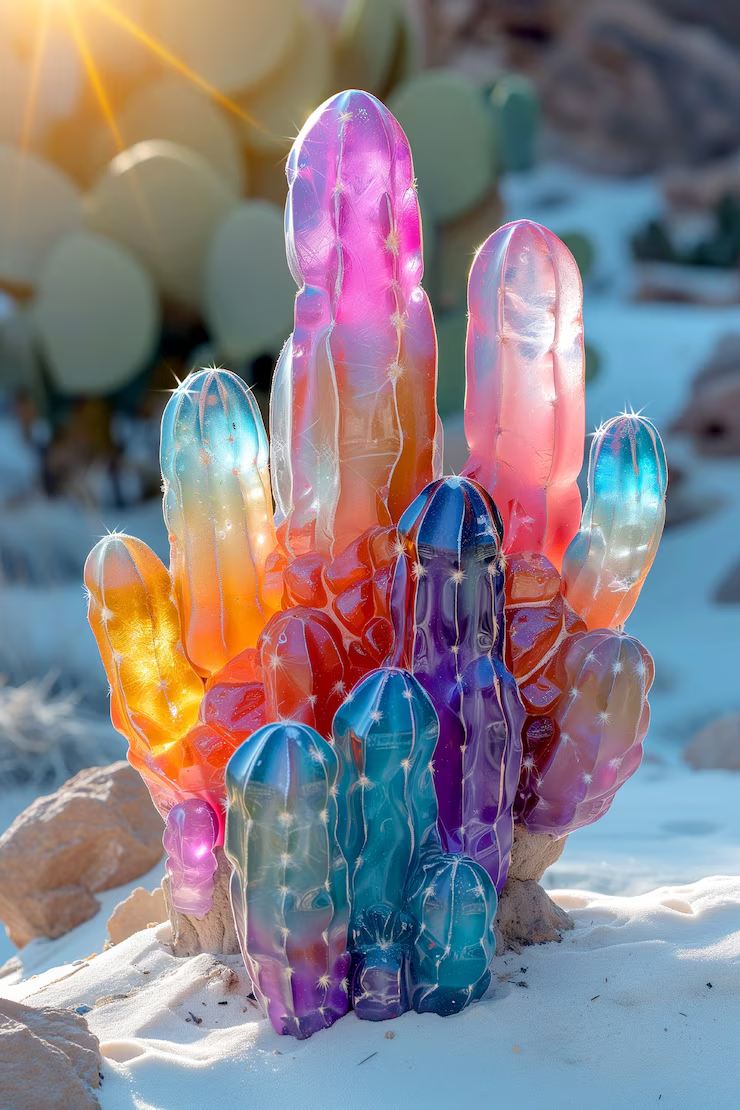Imagine holding the ocean in your hand. A shimmering shell, its curves perfect, its surface dancing with light, its colors so vivid they almost seem alive. Now imagine that this shell isn’t born from the sea, but from fire, sand, and the skillful hands of a master artisan. Welcome to the world of Murano glass shells.
A Thousand Years of Fire and Sand
Murano, a small island near Venice, Italy, has been synonymous with glassmaking for over 700 years. Long before smartphones, 3D printers, or artificial intelligence, Murano glassmakers were experimenting with temperatures, minerals, and techniques to craft objects that defied nature.
The art of creating Murano glass shells is not just about replicating nature’s design; it’s about interpreting it through a language of molten silica, pigments, and human creativity. Every curve, swirl, and hue carries the fingerprint of its maker. In a way, each shell is like a tiny data storage device of ancient knowledge, encoded not in binary, but in the molecular dance of glass cooled to perfection.
What Exactly Is a Murano Glass Shell?
Let’s get specific. A Murano glass shell is a decorative object shaped like a sea shell, typically made entirely by hand using traditional Venetian glassmaking techniques. But don’t think of it as a mere souvenir. Think of it as a technological marvel.
- Materials: High-purity silica sand, soda ash, lime, and metallic oxides for coloring.
- Temperature: The glass is melted at around 1400°C (2552°F).
- Technique: Mouth-blowing, lampworking, and intricate hand-molding.
If you strip away the poetry for a moment, you’re looking at a highly controlled thermochemical process. Yet it’s one that still escapes full automation because it relies so heavily on the artisan’s eye and hand. Modern technology can simulate almost everything, but not the intuition of a Murano master.
The Technology Inside The Art
You might be asking yourself: “Why should a tech enthusiast care about glass shells?” Great question. Let me explain.
Glassmaking is one of the oldest human technologies. Before microchips, before fiber optics, before touchscreen displays, there was glass. And the principles behind making Murano glass shells are directly connected to many modern innovations.
- Material Science: Understanding how silica transitions from solid to liquid and back again is the foundation of everything from smartphone screens to laboratory equipment.
- Color Engineering: The vibrant colors in Murano glass shells come from adding metallic oxides. Cobalt for blue, gold for red, manganese for purple. These same principles apply in industrial coatings, lasers, and even solar panels.
- Thermodynamics: Mastering heat control, cooling rates, and viscosity is a key aspect not only in glass art but in the manufacturing of semiconductors and aerospace materials.
So, when you admire a Murano glass shell, you’re looking at an ancient sibling of modern technology. It’s the original nanotech—built by hand.
How a Murano Glass Shell Is Born
Let’s walk through the process step by step. Picture yourself in a Murano furnace workshop—hotter than any server room, louder than any tech startup.
1. The Ingredients
It starts with silica sand, refined to remove impurities. Then comes soda ash to lower the melting point, and lime to stabilize the structure. Colorants—the secret recipes—are added next. These formulas are often closely guarded family secrets passed down for generations.
2. The Furnace
The mixture is melted in massive clay crucibles at temperatures exceeding 1400°C. The furnace burns day and night, as cooling it down and restarting takes days. The molten glass glows like liquid sunlight.
3. The Gathering
The maestro (master glassmaker) uses a hollow blowpipe to gather a small glob of molten glass. This is where human skill kicks in. The maestro must rotate, blow, and shape the glass in a precise choreography, adjusting to the glass’s behavior in real time.
4. The Shaping
Using special tools—shears, paddles, molds—the glassmaker stretches, flattens, and curves the glass into the familiar spiral of a seashell. Sometimes multiple layers of colored glass are fused together to create the vibrant, swirling patterns Murano is famous for.
5. The Annealing
Once shaped, the shell goes into an annealing oven, where it cools slowly over hours or even days. This controlled cooling prevents internal stress that could lead to cracks.
The Challenges of Making Glass Shells
Making a glass shell isn’t just difficult; it’s absurdly difficult.
- Precision Timing: Work too slowly, and the glass cools and hardens prematurely. Work too quickly, and you risk deforming the structure.
- Heat Sensitivity: Minor variations in temperature can ruin an entire piece.
- Color Control: The colors may change during the heating process, requiring deep knowledge of chemistry.
- No Undo Button: If something goes wrong, there’s no Control-Z. The piece is lost.
Every finished shell is the survivor of a dangerous, volatile process. This is why Murano glass shells are prized worldwide.
The Modern Appeal: Why Technology Lovers Are Falling for Murano Glass Shells
In an era where everything is mass-produced, there’s a growing appreciation for objects that embody craftsmanship. Tech enthusiasts especially can relate to the precision, iteration, and experimentation that Murano glass requires.
1. The Anti-Algorithm
In a world ruled by algorithms and AI-generated art, Murano glass shells offer something fundamentally human: imperfection. Each shell has tiny variations that make it unique. Like limited-edition NFTs, but physical, tangible, and ancient.
2. Material Transparency
Techies appreciate understanding how things work. The transparent nature of glass invites inspection. You can trace the layers, follow the air bubbles, and almost reverse-engineer the artist’s technique with your eyes.
3. Crossover Appeal
Many Murano artisans are starting to collaborate with tech designers, integrating fiber optics, LED lighting, and smart sensors into glass art. Imagine a Murano shell that glows softly when you receive an important email, or changes color based on the weather forecast. The fusion of old-world glass and new-world IoT is already happening.
4. Sustainability and Slow Tech
In the tech world, there’s growing interest in “slow tech”—products made to last, with care, with minimal environmental footprint. Murano glass shells fit perfectly into this philosophy. They don’t require rare earth minerals, they don’t become obsolete, and they can be treasured for generations.
A Hidden Code of Tradition
The world of Murano glass shells also operates like a closed-source software ecosystem. Techniques are passed down within families. The recipes for certain colors are protected like proprietary algorithms. Apprentices must train for years before becoming masters.
In some ways, it resembles the secretive development cycles of the world’s most guarded tech companies. But instead of NDAs and patents, the protection is cultural and generational.
The Future of Murano Glass Shells
Where does this ancient art go next?
- Augmented Reality (AR): Imagine virtual galleries where you can examine Murano shells in 3D before buying.
- Digital Twin Prototyping: Using 3D modeling software to pre-visualize designs before physically making them.
- Collaborative AI: AI could assist in pattern experimentation, suggesting new color blends based on historic data.
- Smart Home Integration: Glass shells that double as ambient smart devices.
Murano glass is not stuck in the past; it’s on the brink of new frontiers. The intersection between ancient craftsmanship and modern tech innovation is wide open.
Conclusion: Holding the Ocean, Holding History
The next time you see a Murano glass shell, don’t just see a pretty object. See the physics of viscosity, the chemistry of metallic oxides, the thermodynamics of controlled cooling. See centuries of human trial and error. See the delicate balance between order and chaos.
In a single Murano glass shell, you’re holding a thousand years of technological evolution, compressed into a perfect spiral of fire-frozen beauty.
Because sometimes, the most advanced technology isn’t the newest—it’s the one that has already mastered the art of being timeless.


https://shorturl.fm/LmGe8
https://shorturl.fm/I4Qcu
https://shorturl.fm/d7KA5
https://shorturl.fm/s8zCS
https://shorturl.fm/nH1aY
https://shorturl.fm/Yl8Sn
https://shorturl.fm/R3qje
https://shorturl.fm/dT4rs
https://shorturl.fm/P756S
https://shorturl.fm/5Igao
https://shorturl.fm/DfLCT
https://shorturl.fm/F9M8I
https://shorturl.fm/rX81o
https://shorturl.fm/gztlN
https://shorturl.fm/XuVoI
https://shorturl.fm/VqvCJ
https://shorturl.fm/pbEG3
https://shorturl.fm/Z4bFu
https://shorturl.fm/cGHQn
https://shorturl.fm/K7Cr5
https://shorturl.fm/lzGDL
https://shorturl.fm/0Clcx
https://shorturl.fm/8mA9t
https://shorturl.fm/7YYXe
https://shorturl.fm/PWNGn
https://shorturl.fm/Je503
https://shorturl.fm/ikpSk
https://shorturl.fm/vjhKy
https://shorturl.fm/0cfip
https://shorturl.fm/mmTC4
https://shorturl.fm/tSPR1
https://shorturl.fm/epuxU
https://shorturl.fm/fEmTE
https://shorturl.fm/W6NvE
https://shorturl.fm/teoeJ
https://shorturl.fm/kYWof
https://shorturl.fm/wM3Ge
https://shorturl.fm/tNvGY
https://shorturl.fm/laPY9
https://shorturl.fm/JRGci
https://shorturl.fm/u3qRH
https://shorturl.fm/GTq4f